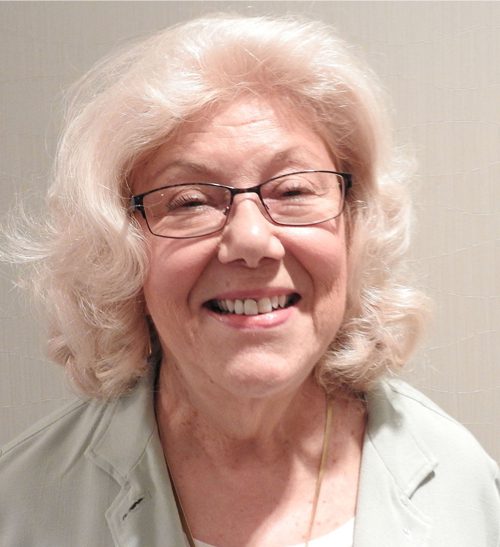
TIMESHARE BOARDMANSHIP: Should boards Zoom?
By Lynne M. Kweder
Q. The pandemic has forced us to hold our last several board meetings electronically. The management company has been hosting computer meetings using a software program which enables them to put our board materials up on our computer screens. We can hear but cannot see our management, nor can we see one another. The materials are hard to read!
We really prefer using paper copies (downloaded if necessary) for reference, and we would like to be able to see one another for our deliberations.
Many of us have been using Facetime or Zoom for calls with family members during this pandemic. We are wondering what you think about using Zoom for board meetings? If we use Zoom, how we can manage it appropriately? Can we maintain sufficient security for our board deliberations on Zoom?
A. From my perspective, a video conferencing system which includes only sharing documents on the screen is no better than a telephonic board meeting for distance communication.
As a board chair, I found telephonic meetings exhausting because I could not see board members’ body language. Facilitators need to observe non-verbal signals to know how presentations are being received, and when people want to speak and get into a conversation.
Trying to facilitate board meetings through a telephone or through board documents on a screen really does not provide enough information about one another to either the leader or the participants to conduct the deliberations necessary to the role and purpose of a board.
A videoconferencing tool enabling participants to see one another can enhance the work of the board and actually contribute added value to the board and your resort.
Reduce your meeting costs
The costs of flying in, housing, and feeding board members from all over the country and, in some cases, from other countries, are considerable. Among non-profit organizations, timeshare boards are on the high end of costly.
At the same time, face-to-face meetings are important for developing the board into an effective working group, and for some of the most important long-range decision-making for which a board is responsible. Some decisions a board makes require months of preparation and day-long meetings.
Board members also must develop a sensitivity to seasonal differences in the culture of the owners and issues confronting the resort by meeting on-site during different seasons and conditions—although reducing a board’s face-to-face meetings by even one meeting a year can make a significant difference in cost to the resort.
Expand active participants
When you can recruit non-board-member owners to contribute their knowledge and skills to committee work, and simultaneously use that process to identify potential future board members, the board’s work is enhanced and the resort experiences added value from the expanded participation. The use of Zoom for committee meetings can make the participation of non-board-member owners as committee members affordable and therefore feasible.
Used selectively for perhaps one board meeting a year and for some committees which may meet exclusively on Zoom can reduce your costs; expand the board’s human resources, skills, and talents; and provide a recruiting ground for future board members.
Set zooming expectations
If you decide to experiment with Zoom meetings, you will want to make Zoom an effective substitute for in-person meetings. Think through what you value about your face-to-face board meeting process and what the norms are for behaviors and appearance. Then spell out a set of expectations for online conferencing behaviors and appearance for board meetings.
When people work from home, they sometimes make very different assumptions about behaviors and appearance than when they attend formal meetings. A university professor friend tells me that one student in her online Zoom class lay in bed with the covers up to her chin. Many instances have been reported of people wearing pajama bottoms or shorts, and then getting up to reach for something—such as a calendar or a cup of coffee—and revealing their inappropriate apparel to everyone on the screen.
Examples of expectations would be:
• To clearly see and hear each participant during the meeting.
• To minimize the sharing of documents on the screen with exceptions only for external presenters or last- minute availability of a document.
• To email all internal documents in advance, expecting board members to use their own copies for reference during meetings.
• To observe your regular meeting process of seeking recognition to speak.
• To provide “bio†and lunch breaks during your meetings as needed.
• When unexpected background noise occurs, to mute speakers except when you are talking.
Keep it formal
To honor the formality of the meeting, each participant should arrange to work in a quiet, interruption-free space; avoid multi-tasking (i.e., answering texts or emails); avoid eating during the formal meeting sessions (although water and coffee may be acceptable); and avoid sharing the meeting’s Zoom link with unauthorized persons.
Also, dress for success. When you Zoom, wear apparel appropriate to in-person board meetings. Research reported in Scientific American cites the amazing impact of dress on behavior: those in business clothing demonstrate better abstract thinking and negotiating skills.
In my observation, “business casual†is the dress of choice for timeshare boards—still a step up from sweats, housecoats, or whatever you wear around the house. I suggest you adopt a step-up standard for board meetings. Choose an apparel color different from the color of your background so you don’t look like a floating head.
Prepare board members
Board members also may need preparation for effective zooming. For example:
• Go to the Zoom website. Check out the basic instruction for using Zoom on the Zoom website and download the Zoom app, which will enable you to participate in Zoom meetings. Even if you have been zooming with friends, you may not have explored all the options.
• Practice zooming. Practice using Zoom with a friend or relative, experimenting with the options in the program. Familiarize yourself with the Raise Hand and Chat options. Also learn to switch from Gallery mode (where you see everyone in the meeting) to Speaker mode (where you see only the person who is speaking).
The board chair and meeting host will likely want to see everyone during the meeting, but it’s more natural and less stressful for other participants to look at one person at a time than face to face at the entire board.
• Practice additional Zoom skills, as needed. If you are the board president or a committee chair, you may need to share documents from your own computer on the screen. You will want to position the documents so you can call them up immediately. Speaking from personal experience, this does require some practice.
• Lighting and positioning: As you experiment, position your lighting to be sure others can see your face clearly. Some light in front and above seems to work better than side lighting. If you have a white or light-colored ceiling, try aiming a lamp upward to diffuse the light and illuminate your face without glare or shadows. Position your computer camera to frame your head and shoulders. Before every meeting, recheck your lighting and body position.
We are in a period when we are all learning about the pitfalls of Zoom, so you will likely want to review and revise your expectations and instructions as you build on your own experiences.
Keep the schedule real
Just as you would in an in- person meeting, build informal time and periodic breaks into the Zoom meeting schedule.
Informal time during which board members chat with one another and with owner guests occurs naturally before, during breaks, and after face-to face board meetings.
We always invited any guests who sat through an entire morning’s meeting to join us for our picnic-type lunches. Many boards schedule a dinner social meeting for the board and management.
By comparison, Zoom meetings can seem stiff, formal, and even intimidating. I suggest a 15-minute “informal time†before Zoom board and committee meetings so board members can greet each other informally, communicate any important personal news, and meet owner guests who join the meeting.
My years of working with large groups have underscored the principle that breaks are best scheduled each hour and a half. If breaks are not scheduled, someone inevitably leaves the room after an hour and a half, followed by several others. Two hours seems to be the outside limit meetings can go without a break—particularly in the morning, after most folks drink coffee or other diuretic beverages.
Breaks are even more important with Zoom meetings because of the eye strain that occurs after staring at a computer screen for long periods of time, and stress to the neck and other body parts from sitting still within view of the camera.
Protect meeting security
Finally, give serious consideration to the security of your Zoom meetings. Zoom has had enough experience with “Zoom bombing†by intruders to provide multiple layers of security in easy-to-use features which the meeting host can activate. Learn and use those features. Also, limit sharing of the Zoom link for the meeting to authorized attendees (which include your owner guests).
I do want to issue a special warning about recording your meeting. Boards are obligated to maintain control of their meeting records.
Attorneys generally recommend that your meeting minutes be limited to the decisions you make in the form of your motions and votes on those motions. Use your own recording device for Zoom meetings to capture the material for later use in transcribing it for your minutes. Avoid using the Zoom recording feature to protect and control your legal meeting record.
Summary
To summarize, Zoom and other videoconferencing systems can enhance board work if used selectively. Some forethought about the best use of these systems in your particular situation, and the detailed preparation of your board members, will improve everyone’s experience with the system.
Zoom can reduce your costs and increase the availability of human resources and skills to enhance the board’s work. Zoom can be an effective substitute for face-to-face board and committee meetings, and a way to identify, interview, and recruit potential board members. I recommend that you give Zoom a try.
Lynne M. Kweder is an organization development consultant, a board certified coach, trainer of boards of directors and management, and administrator. She spent seven years as board president of the Turtle Reef Condominiums I, Inc. (dba Turtle Reef Club), Jensen Beach, FL.



